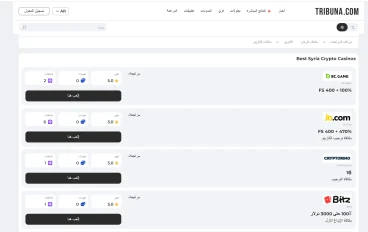
Daily Life Quality: Proven Strategies for Improvement
Daily Life Quality: Proven Strategies for Improvement
Enhancing daily life quality is crucial for overall wellbeing and life satisfaction. In today's fast-paced world, it's easy to get caught up in the hustle and bustle and neglect our own needs.

Ideas to Improve Daily Life Quality
Fortunately, there are proven strategies that can help improve daily life quality. By incorporating these strategies into our daily routines, we can experience significant improvements in our overall wellbeing and quality of life.
Key Takeaways
- Simple changes can significantly enhance daily life quality.
- Wellbeing strategies can be incorporated into daily routines.
- Life satisfaction is closely linked to daily life quality.
- Proven strategies can lead to improved overall wellbeing.
- Making small adjustments can have a big impact.
The Science of Life Quality and Wellbeing
Understanding the science behind life quality and wellbeing is crucial for implementing effective wellbeing strategies. Research has shown that wellbeing is a multifaceted concept that encompasses various aspects of an individual's life.
Physical, Mental, and Social Dimensions
Wellbeing can be broadly categorized into physical, mental, and social dimensions. Physical wellbeing refers to the state of one's body, including health and physical functioning. Mental wellbeing involves emotional and psychological aspects, such as happiness and life satisfaction. Social wellbeing pertains to the quality of relationships and social connections.
Research-Backed Factors That Influence Daily Satisfaction
Studies have identified several factors that influence daily satisfaction, including life satisfaction, happiness, and a sense of purpose. Research has also shown that gratitude practices, social connections, and a balanced lifestyle can contribute to overall wellbeing and happiness. By understanding these factors, individuals can implement targeted strategies to improve their overall quality of life.
Transformative Morning Routines
A transformative morning routine is more than just a series of tasks; it's a foundation for a fulfilling day. By incorporating consistent practices, individuals can enhance their mental and physical well-being, setting a positive tone for the day ahead.
Establishing Consistent Wake-Up Times
Consistency is key when it comes to wake-up times. Waking up at the same time daily helps regulate the body's internal clock, improving the quality of sleep and overall energy levels. This consistency can be achieved by setting a regular alarm time, even on weekends.
Mindful Morning Rituals
Mindfulness in the morning can be cultivated through various rituals. Meditation and Breathing Exercises can help calm the mind, while Journaling Practices allow for reflection and goal setting.
Meditation and Breathing Exercises
Starting the day with meditation can reduce stress and increase focus. Simple breathing exercises can also be beneficial, promoting relaxation and mental clarity.
Journaling Practices
Journaling in the morning provides an opportunity to reflect on goals, gratitudes, and challenges. It's a therapeutic way to process thoughts and plan the day ahead.
Nutritious Breakfast Options for Sustained Energy
A nutritious breakfast is essential for sustained energy throughout the morning. Incorporating a balance of proteins, complex carbohydrates, and healthy fats can provide the necessary fuel for the day's activities.
- Oatmeal with fruits and nuts
- Scrambled eggs with whole-grain toast
- Greek yogurt with berries and honey
By combining a consistent wake-up time, mindful morning rituals, and a nutritious breakfast, individuals can create a transformative morning routine that enhances their overall quality of life.
Physical Health Optimization Strategies
Enhancing physical health through strategic optimization can lead to a better quality of life. By focusing on efficient exercise routines, nutrition principles, and sleep hygiene practices, individuals can significantly improve their overall wellbeing.
Efficient Exercise Routines for Busy Professionals
Busy professionals can benefit from High-Intensity Interval Training (HIIT), which is a time-efficient way to improve cardiovascular health and boost metabolism. Incorporating movement throughout the day, such as taking the stairs or short walks, can also contribute to better physical health.
High-Intensity Interval Training
HIIT involves short bursts of intense exercise followed by brief periods of rest. This type of training has been shown to be effective in improving insulin sensitivity and cardiovascular health.
Movement Integration Throughout the Day
Simple changes, such as standing while working or doing a few squats during breaks, can make a significant difference in overall physical activity levels.
Nutrition Principles for Enhanced Performance
A balanced diet rich in whole foods, such as fruits, vegetables, and lean proteins, is essential for optimal physical health. As "You are what you eat," making informed nutrition choices can significantly impact energy levels and overall wellbeing.
Sleep Hygiene Practices for Restorative Rest
Establishing a consistent sleep schedule and creating a sleep-conducive environment are crucial for restorative rest. Avoiding caffeine and electronics before bedtime can also improve sleep quality.
Mental Wellness Techniques for Daily Resilience
Building daily resilience is crucial for maintaining mental wellness in today's fast-paced world. By incorporating specific techniques into daily routines, individuals can enhance their ability to cope with stress and adversity.
Evidence-Based Mindfulness Practices
Mindfulness practices have been shown to reduce stress and improve mental wellbeing. Techniques such as mindful breathing and body scan meditation can be practiced daily to promote relaxation and focus.
Regular mindfulness practice can lead to increased emotional regulation and a greater sense of calm. It's recommended to start with short sessions, even just a few minutes a day, and gradually increase duration as one becomes more comfortable with the practice.
Effective Stress Management Protocols
Effective stress management is critical for maintaining mental wellness. Techniques such as progressive muscle relaxation and cognitive-behavioral therapy (CBT) can help individuals manage stress more effectively.
Implementing stress management protocols involves identifying personal stress triggers and developing strategies to mitigate their impact. This can include setting realistic goals, practicing time management, and engaging in regular physical activity.
Cognitive Reframing for Optimistic Perspective
Cognitive reframing involves changing the way one thinks about challenging situations. By adopting a more optimistic perspective, individuals can build resilience and improve their mental wellbeing.
This technique involves identifying negative thought patterns and replacing them with more balanced, positive ones. Regular practice can lead to improved emotional resilience and a more positive outlook on life.
Workspace Design for Maximum Productivity
A well-designed workspace is crucial for maximizing productivity and overall job satisfaction. To achieve this, it's essential to consider several key elements that contribute to an efficient and comfortable work environment.
Ergonomic Principles for Physical Comfort
Ergonomic design is vital for reducing physical discomfort and preventing work-related injuries. This includes using an ergonomic chair and positioning your computer monitor at a comfortable height. Proper ergonomics can significantly enhance your productivity by reducing distractions caused by discomfort.
Digital Organization Systems
Effective digital organization is critical for maintaining a clutter-free and efficient workspace. Implementing a robust digital filing system and utilizing project management tools can help streamline your workflow. This enables you to quickly locate necessary documents and focus on tasks at hand.
Environmental Psychology for Focus and Creativity
Environmental psychology plays a significant role in workspace design, influencing factors such as lighting, color schemes, and even the incorporation of plants. These elements can enhance focus, stimulate creativity, and contribute to a more positive work environment.
By integrating these elements, you can create a workspace that not only boosts productivity but also supports your overall wellbeing.
Advanced Time Management Frameworks
To maximize daily output, implementing advanced time management frameworks is essential. Effective time management enables individuals to prioritize tasks, manage distractions, and maintain a sustainable work pace.
Strategic Priority Setting Methods
Setting priorities is a fundamental aspect of time management. The Eisenhower Matrix is a valuable tool for categorizing tasks based on their urgency and importance. This method helps individuals focus on critical tasks while delegating or deferring less important ones.
Time Blocking and Task Batching Techniques
Time blocking involves scheduling large chunks of uninterrupted time to focus on important tasks. Task batching is a related technique where similar tasks are grouped together and completed in one session. Both methods can significantly enhance productivity by reducing the overhead of task switching.
Overcoming Procrastination and Distraction
Procrastination and distraction are common obstacles to effective time management. Strategies such as the Pomodoro Technique, which involves working in focused 25-minute increments followed by a 5-minute break, can help maintain focus. Additionally, eliminating or minimizing distractions by creating a conducive work environment is crucial.
By implementing these advanced time management frameworks, individuals can significantly improve their productivity and achieve a better work-life balance.
Ideas to Improve Daily Life Quality Through Relationships
Our daily life quality is profoundly impacted by the strength of our personal relationships. Nurturing these connections can lead to a more fulfilling and satisfying life. In this section, we will explore how to cultivate deep and meaningful relationships, set healthy boundaries, and engage with our community to enhance social fulfillment.
Cultivating Deep and Meaningful Connections
Building strong, meaningful connections requires effort and dedication. It involves being present and engaged with others, fostering an environment of trust and understanding.
Active Listening Techniques
Active listening is a powerful tool for deepening relationships. It involves fully concentrating on what the other person is saying, understanding their perspective, and responding thoughtfully. By doing so, we show that we value and respect the other person's thoughts and feelings.
Vulnerability and Authentic Communication
Being vulnerable and communicating authentically are key elements in forming deep connections. Sharing our true selves, including our fears and aspirations, can create a strong bond with others. It's about being honest and open, which helps in building trust and understanding.
Setting and Maintaining Healthy Boundaries
Establishing and maintaining healthy boundaries is crucial for sustaining positive relationships. It involves understanding our limits and communicating them clearly to others. Healthy boundaries help prevent burnout and maintain our emotional wellbeing.
Community Engagement for Social Fulfillment
Engaging with our community can significantly enhance our sense of social fulfillment. Participating in local activities, volunteering, or joining clubs and organizations can help us connect with like-minded individuals. These shared experiences can foster a sense of belonging and purpose.
By focusing on these aspects, we can improve our daily life quality through more meaningful and fulfilling relationships.
Home Environment Optimization
Transforming your living space can lead to substantial improvements in your quality of life. A well-optimized home environment not only enhances your physical health but also boosts your mental wellbeing.
Systematic Decluttering Approaches
Decluttering is a fundamental step in optimizing your home environment. It involves systematically removing unnecessary items that clutter your space, thereby reducing stress and improving focus. Start by categorizing items into keep, donate, and discard piles. Begin with one area at a time to avoid feeling overwhelmed.
Creating Dedicated Spaces for Relaxation
Creating dedicated spaces for relaxation is crucial for unwinding and recharging. Designate a specific area for relaxation, free from distractions and clutter. Incorporate elements like comfortable seating, soft lighting, and calming colors to create a serene atmosphere.
Biophilic Design Elements for Wellbeing
Incorporating biophilic design elements can significantly enhance your wellbeing. Biophilic design involves bringing nature indoors through elements like plants, natural light, and natural materials. As noted by experts, "Biophilic design has been shown to reduce stress, improve mood, and boost productivity."
By implementing these strategies, you can create a home environment that supports your overall wellbeing and enhances your quality of life.
Digital Wellbeing Strategies
As we increasingly rely on digital technologies, strategies for digital wellbeing have become essential for a balanced life. The pervasive presence of digital devices in our daily routines can significantly impact our mental and physical health if not managed properly.
Implementing Effective Screen Time Limits
Setting limits on screen time is a crucial step towards achieving digital wellbeing. By establishing screen-free zones and times, individuals can reduce their exposure to digital devices and mitigate potential negative effects on their health.
Structured Digital Detox Protocols
Engaging in digital detoxes can help individuals reset their relationship with technology. Structured protocols, such as device-free days or digital-free hours, can be effective in reducing digital dependency and promoting a healthier balance.
Mindful Information Consumption Habits
Cultivating mindful information consumption habits is vital in today's information age. Being selective about the sources of information and avoiding excessive news consumption can help reduce stress and improve overall digital wellbeing.
Financial Wellness Practices
The path to financial wellness involves several strategic practices that can significantly enhance one's quality of life. By adopting a few simple yet effective habits, individuals can better manage their finances, reduce stress, and achieve long-term financial goals.
Simplified Budgeting Systems
A simplified budgeting system is foundational to financial wellness. This involves tracking income and expenses, categorizing spending, and setting realistic financial targets. By using digital tools or apps, individuals can streamline this process, making it easier to stick to their budget.
Conscious Spending and Saving Approaches
Conscious spending and saving are critical components of financial wellness. This entails making informed purchasing decisions, avoiding impulse buys, and allocating a portion of income towards savings. By prioritizing needs over wants, individuals can cultivate healthier financial habits.
Long-term Financial Planning for Peace of Mind
Long-term financial planning is essential for achieving peace of mind. This includes setting retirement goals, investing wisely, and ensuring adequate insurance coverage. By having a comprehensive financial plan, individuals can mitigate financial risks and secure their financial future.
Personal Growth and Continuous Improvement
Embracing personal growth is a lifelong journey that requires dedication and a willingness to learn. It involves adopting practices that foster continuous improvement in various aspects of life.
Structured Lifelong Learning Approaches
Engaging in lifelong learning is crucial for personal growth. This can be achieved through online courses, workshops, and reading. The key is to stay curious and open to new experiences and knowledge.
Effective Goal Setting and Implementation
Setting clear and achievable goals is vital for personal growth. This involves identifying areas for improvement, setting specific objectives, and creating an action plan. Accountability and regular review of progress are essential for success.
Progress Tracking and Achievement Celebration
Tracking progress and celebrating achievements are critical components of personal growth. This can be done through journaling or using productivity apps. Recognizing milestones helps to stay motivated and encouraged throughout the journey.
Conclusion: Integrating Strategies for Lasting Life Quality Enhancement
Enhancing daily life quality requires a multifaceted approach that incorporates physical, mental, and social well-being strategies. By integrating the proven strategies outlined in this article, individuals can experience lasting improvements in their overall quality of life.
Effective integration involves setting realistic goals, prioritizing tasks, and maintaining a consistent routine. By combining transformative morning routines, physical health optimization, mental wellness techniques, and advanced time management frameworks, individuals can create a robust foundation for life quality enhancement.
To achieve lasting results, it's essential to monitor progress, celebrate achievements, and make adjustments as needed. By adopting a holistic approach to life quality enhancement and integrating strategies that work best for each individual, people can enjoy sustained improvements in their daily lives.






























